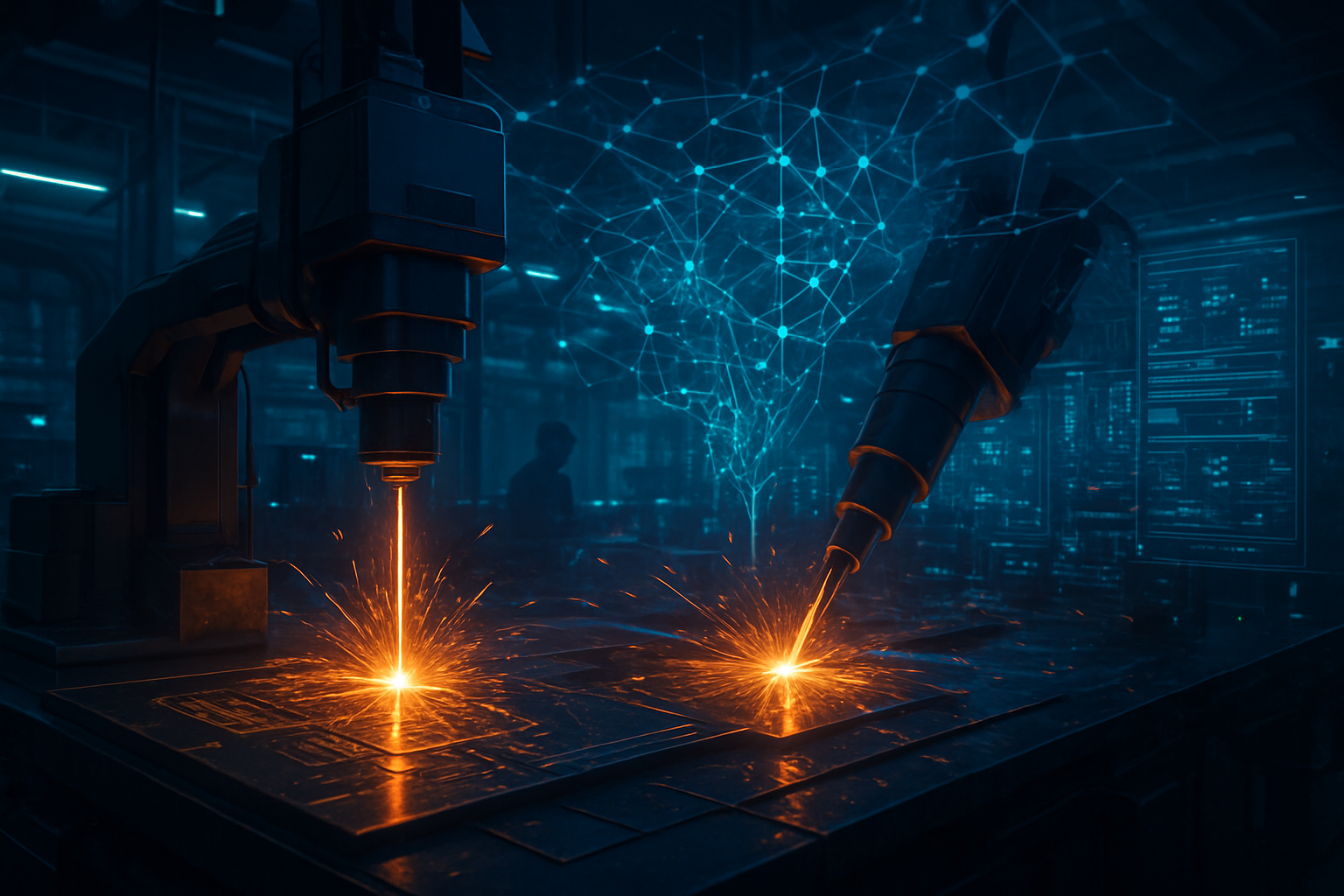Late 2025 witnessed a significant and unsettling retreat in tech stocks, particularly those closely tied to Artificial Intelligence (AI). After a period of unprecedented growth fueled by the promise of transformative AI, the market experienced a sharp downturn, leaving investors questioning the sustainability of soaring valuations and the immediate profitability of cutting-edge AI ventures. This slump, characterized by widespread sell-offs and a palpable shift in investor sentiment from exuberance to caution, signals a critical re-evaluation of the AI sector's trajectory and its true economic impact.
The immediate significance of this market correction is a broad "risk-off" sentiment that has permeated beyond just the tech sector. Major indices, including the S&P 500, Nasdaq Composite, and Dow Jones Industrial Average, have seen notable declines, with the tech-heavy Nasdaq closing below key technical indicators for the first time in months. This downturn is prompting a crucial debate: is this merely a healthy correction bringing valuations back to earth, or the precursor to an "AI bubble" burst akin to the dot-com era?
Unpacking the Market's Retreat: Technical Details and Expert Concerns
The late 2025 AI tech stock slump is not a monolithic event but a complex interplay of several factors, prompting a rigorous technical reassessment of the sector. At its core, the downturn is driven by growing skepticism regarding the lofty valuations of many AI companies, with a significant disconnect emerging between market excitement and demonstrable profitability.
A central concern revolves around exaggerated growth expectations and high valuation multiples. Many AI firms, particularly those in generative AI, have been trading at extremely high price-to-earnings (P/E) or price-to-sales ratios, far exceeding broader market averages. This implies that investors have been pricing in aggressive, multi-year revenue and earnings growth that may be difficult to sustain. The lack of clear, consistent profitability and scalable business models for many pure-play AI software providers has exacerbated these fears. An August 2025 MIT study, widely cited in financial circles, reportedly indicated that 95% of organizations are seeing zero return from their generative AI investments, significantly dampening investor enthusiasm and highlighting the gap between capital expenditure and measurable ROI.
The market has also been grappling with "AI Bubble" fears, drawing increasing parallels to the dot-com bubble of the late 1990s. The rapid ascent of AI-related stocks, particularly the "Magnificent Seven" (Alphabet [NASDAQ: GOOGL], Amazon [NASDAQ: AMZN], Apple [NASDAQ: AAPL], Meta [NASDAQ: META], Microsoft [NASDAQ: MSFT], Nvidia [NASDAQ: NVDA], Tesla [NASDAQ: TSLA]), fueled worries about an unsustainable reliance on a handful of tech giants. Nvidia (NASDAQ: NVDA), a bellwether for AI growth due to its dominance in AI training infrastructure, found itself at the epicenter, experiencing a significant single-day drop and entering correction territory, signaling widespread valuation stress among AI leaders.
Furthermore, macroeconomic uncertainty has played a significant role. Lingering inflation concerns, a hawkish Federal Reserve, and delayed U.S. employment data (due to a government shutdown) have fueled market jitters. Higher-for-longer interest rates make the lack of immediate AI returns even more pronounced, as future earnings are discounted more steeply. This has coincided with a steep cryptocurrency market drawdown, erasing over a trillion dollars in market cap and contributing to a broader de-risking sentiment across cyclical and growth exposures. Experts like those at Goldman Sachs (NYSE: GS) forecast a potential decrease in S&P 500 annual returns over the next decade, with AI adoption and valuation headwinds being key factors.
Initial reactions from the financial community have been cautious, characterized by a "risk-off" mood. CNN's Fear & Greed Index reportedly slid to "extreme fear" levels, indicating widespread profit-taking and leverage reduction. Analysts are increasingly scrutinizing valuation metrics, demanding more rigorous fundamental analysis, and prioritizing companies that demonstrate a clear pathway to profitability. While some view the dip as a potential buying opportunity, betting on AI's long-term potential, there's a growing expectation of a "market reckoning" in 2026, where investment will refocus on AI projects that can demonstrate clear, near-term return on investment.
Corporate Crossroads: Impact on AI Companies, Tech Giants, and Startups
The AI tech stock slump has created a starkly differentiated landscape for companies operating within the artificial intelligence ecosystem, separating the resilient from the vulnerable and reshaping competitive dynamics. Warnings from financial authorities, including the Bank of England and IMF in October 2025, about "stretched" equity valuations and a growing risk of a "sharp market correction" for AI-focused tech companies, have materialized in this volatility.
Pure-play AI companies, especially those with high valuations, minimal revenue, and unproven profitability, are bearing the brunt of the downturn. Access to venture funding, which has historically fueled their capital-intensive research and development, has tightened significantly. This forces weaker startups into difficult choices: consolidation, acquisition by larger players, or outright collapse. Companies with high burn rates and insufficient cash reserves face immense pressure to cut costs, leading to potential layoffs and a slowdown in product development. For instance, companies like C3.ai (NYSE: AI) have already faced scrutiny over declining revenue and widening net losses, raising concerns about long-term profitability and product differentiation.
In contrast, major tech giants, often referred to as the "Magnificent Seven," are generally better positioned to weather the storm. While their stocks, including Microsoft (NASDAQ: MSFT), Amazon (NASDAQ: AMZN), and Nvidia (NASDAQ: NVDA), have experienced dips amid "AI bubble" fears, their diversified revenue streams, robust cash reserves, and established ecosystems provide a significant buffer. These giants, with their "full-stack control" from chips to cloud computing (e.g., Microsoft Azure AI) and consumer products, are strategically poised to consolidate the market by acquiring struggling AI startups. Their focus on integrating AI capabilities into existing, profitable product ecosystems offers a more balanced risk profile than purely speculative AI ventures. However, even these giants face increased scrutiny from Wall Street to demonstrate tangible ROI from their massive AI investments.
AI startups find themselves in the most precarious position. The drying up of venture capital, a hallmark of tech downturns, disproportionately impacts those without viable business models. Only startups that can clearly articulate and demonstrate how their AI solutions solve real-world problems and deliver measurable ROI are likely to attract continued investment. This period will likely accelerate consolidation, with larger, cash-rich tech giants acquiring smaller, innovative AI startups, potentially leading to an "uneven transfer of wealth" and a more concentrated market. Companies providing foundational AI components, such as Taiwan Semiconductor Manufacturing Company (NYSE: TSM), ASML (NASDAQ: ASML), and Micron Technology (NASDAQ: MU), are expected to remain crucial due to sustained demand for their essential products, potentially widening their technological leadership.
The slump also brings disruptions to existing products and services. Companies may scale back or halt ambitious AI initiatives lacking immediate profitability. The focus shifts to AI applications that demonstrably improve operational efficiency and reduce costs. For example, traditional software providers like Nice (NASDAQ: NICE) and Adobe (NASDAQ: ADBE) have seen their stocks decline due to concerns that generative AI or competing AI-powered offerings could disrupt demand among their user bases. This period will prioritize "execution over narrative," rewarding companies that deliver tangible results and have a long-term vision for AI's strategic transformation, rather than merely generating hype.
A Broader Lens: AI's Place in the Tech Landscape and Historical Context
The late 2025 AI tech stock slump represents a significant moment in the broader AI landscape, prompting deep reflection on its trajectory and place in technological history. It underscores the market's ongoing struggle to accurately price a revolutionary technology whose full economic and societal impact is still unfolding.
This downturn fits into a broader trend of maturation and recalibration within the AI sector. While technological advancements in generative AI and multimodal AI continue at a rapid pace, the market is demanding a clearer path from innovation to tangible economic value. The massive investments by tech giants like Amazon (NASDAQ: AMZN), Alphabet (NASDAQ: GOOGL), Meta (NASDAQ: META), and Microsoft (NASDAQ: MSFT) in AI infrastructure are projected to continue, driving down costs and fueling further innovation. However, the market is becoming more discerning about where capital is allocated, demanding clearer pathways to profitability and sustainable growth.
The overarching debate centers on whether this is an "AI bubble burst" or a "healthy correction." Proponents of the bubble theory point to "overheated" trading, "stretched valuations," and a market concentration where the "Magnificent Seven" AI-related stocks account for a significant portion of global indices, surpassing dot-com era concentrations. The reported failure rate of corporate AI initiatives to yield returns further fuels this skepticism. Conversely, those arguing for a healthy correction emphasize that current AI advancements are underpinned by genuine technological breakthroughs and concrete use cases, unlike many speculative ventures of past bubbles. They view a 10% market drawdown as a normal correction within a period of significant innovation. A nuanced perspective suggests a hybrid scenario, where certain segments may exhibit bubble-like conditions, but AI as a general-purpose technology represents a profound, long-term transformative force.
Comparisons to previous tech market corrections are inevitable. The most frequent parallel is drawn to the dot-com bubble of the late 1990s and early 2000s, characterized by speculative investment, "frothy valuations," and the promise of a universal solution. However, today's leading tech companies often possess stronger fundamentals, higher profitability, and more established business models than many of the unprofitable dot-com ventures. The current environment also reflects broader tech market dynamics, where rising interest rates historically lead to corrections in high-growth tech stocks, as future earnings are discounted more steeply.
The slump highlights several potential concerns: the risk of "circular financing" creating artificial revenue streams, the amplified volatility due to AI's role in algorithmic trading, and the ethical implications and biases inherent in rapidly deployed AI systems. Despite these challenges, the fundamental importance of AI remains. This period is less about the failure of AI technology itself and more about the market's journey to accurately value its profound, yet often gradual, economic impact.
The Road Ahead: Future Developments and Expert Predictions
Looking beyond the late 2025 slump, the AI tech market is poised for continued, albeit more scrutinized, growth and transformative developments. Experts predict that despite potential short-term volatility, the underlying technological advancements and broadening applications will drive substantial market expansion.
In the near-term and long-term, AI technology will become smarter and more specialized. Expect to see next-generation AI models, like future iterations of GPT and Gemini, significantly improving in accuracy, contextual reasoning, and natural language capabilities, reducing "hallucinations" and handling complex queries more reliably. A major shift towards industry-specific generative AI models, tailored for sectors like healthcare, finance, and manufacturing, will offer more precise and relevant outputs. The rise of distributed and edge AI will enable real-time insights with lower latency and greater privacy by processing data on devices like smartphones and IoT sensors, crucial for autonomous vehicles and industrial robotics.
The emergence of autonomous AI agents, capable of making decisions and performing multi-step tasks without constant human prompting, is a significant development. These agents will evolve into sophisticated digital coworkers, automating dynamic processes across customer service, supply chains, and finance. Furthermore, the convergence of AI and robotics (Physical AI) will see robots exhibiting enhanced perception, adaptability, and decision-making, operating seamlessly alongside humans in diverse environments. AI will also increasingly serve as a powerful software development tool, enabling "vibe coding" (programming with plain-language prompts) and accelerating code generation and testing. In the longer term, the fusion of quantum computing and AI could unlock unprecedented computational power, leading to breakthroughs in scientific discovery.
The global AI market is projected for explosive growth, with some estimates suggesting it could reach $4.8 trillion by 2033. Investment trends will continue to pour into foundational models, customized AI solutions, and crucial AI hardware and infrastructure. Significant opportunities exist in the semiconductor value chain, with datacenter accelerator markets projected to exceed $300 billion by 2026. However, this investment will be coupled with increased scrutiny regarding ROI, moving beyond "blind scaling" to specialization and efficiency.
Potential applications and use cases on the horizon are vast, spanning nearly all sectors. In financial services, expect enhanced fraud detection, real-time risk assessment, and personalized financial advice. Healthcare will see AI-assisted surgery, faster diagnostics, and personalized medicine. Transportation will benefit from real-time route optimization and autonomous vehicles. Manufacturing will leverage AI for smart factories and predictive maintenance. In the workplace, AI will automate 60-70% of employees' time, assisting with tasks from note-taking to report writing. By 2026, up to 90% of online content could be synthetically generated by AI, fundamentally altering content creation industries.
However, several challenges need to be addressed. Ethical concerns, bias in algorithms, and data privacy remain paramount. The immense computational resources and energy demands of large AI models raise questions about sustainability. Integrating AI into existing infrastructures and addressing significant skill gaps in the workforce will be crucial. Robust and adaptable regulatory frameworks, like the EU AI Act, are essential to guide ethical development and deployment, alongside managing geopolitical competition in the AI chip ecosystem.
Experts predict that 2026 will be a pivotal year, shifting from speculative growth to a focus on demonstrable value. While market volatility is expected to continue, the long-term growth trajectory for AI remains strong. Innovation will focus on smarter, specialized models and the proliferation of edge AI. Investment will prioritize foundational elements and commercialization of advanced generative AI. There will be a stronger emphasis on robust AI governance, moving beyond mere compliance to continuous audits and explainability, as companies demonstrating trustworthy AI gain a competitive advantage.
A Turning Point: Assessing AI's Trajectory
The late 2025 AI tech stock slump serves as a profound reality check for an industry that has, for a period, seemed impervious to traditional market forces. It marks a critical transition from an era of unbridled speculative euphoria to a more sober, disciplined assessment of AI's actual economic impact and profitability. While the immediate aftermath has been characterized by market volatility and investor apprehension, this period is likely to be assessed in AI history as a necessary recalibration, rather than a catastrophic failure of the technology itself.
The key takeaways are clear: the market is demanding tangible returns and sustainable business models from AI ventures. Lofty valuations based purely on future potential are being re-evaluated, and companies must demonstrate a clear path to profitability to attract and retain investment. Macroeconomic factors, coupled with a critical reassessment of AI's immediate ROI, have exposed vulnerabilities in highly concentrated market gains. This has initiated a strategic pivot across the industry, with a renewed focus on practical, high-impact AI applications that solve real-world problems and deliver measurable value.
In terms of long-term impact, this correction is likely to foster more sustainable growth within the AI sector. It will weed out overvalued and unsustainable ventures, reinforcing the dominance of well-capitalized tech giants and resilient startups with proven value propositions. The shift will be towards "execution over narrative," prioritizing companies that can effectively deploy AI and deliver concrete results. This period could also accelerate the development of more ethical and trustworthy AI systems, as companies realize that robust governance and responsible deployment are not just regulatory requirements but competitive advantages.
What to watch for in the coming weeks and months will be crucial indicators of the market's recovery and the AI industry's evolution. Investors should closely monitor:
- Continued valuation re-evaluation: Observing whether AI companies can justify their current valuations with stronger earnings and clearer profitability.
- Shifts in investor sentiment: A potential year-end rally could signal renewed confidence, or sustained pessimism could indicate further market adjustments.
- Innovation focus: The emergence of more specialized, industry-specific AI models and the commercialization of agentic AI will be key.
- Regulatory actions: Statements from central banks regarding interest rates and the ongoing development of AI governance frameworks will significantly influence market stability and investment trends.
- Corporate earnings reports: These will be closely scrutinized for evidence of AI-driven revenue growth and profitability, moving beyond mere capital expenditure on AI.
The late 2025 AI tech stock slump is not the end of the AI revolution, but rather a significant turning point, guiding it towards a more mature, sustainable, and ultimately, more impactful future. The coming months will reveal which companies are truly built for the long haul in this transformative technological era.
This content is intended for informational purposes only and represents analysis of current AI developments.
TokenRing AI delivers enterprise-grade solutions for multi-agent AI workflow orchestration, AI-powered development tools, and seamless remote collaboration platforms.
For more information, visit https://www.tokenring.ai/.









